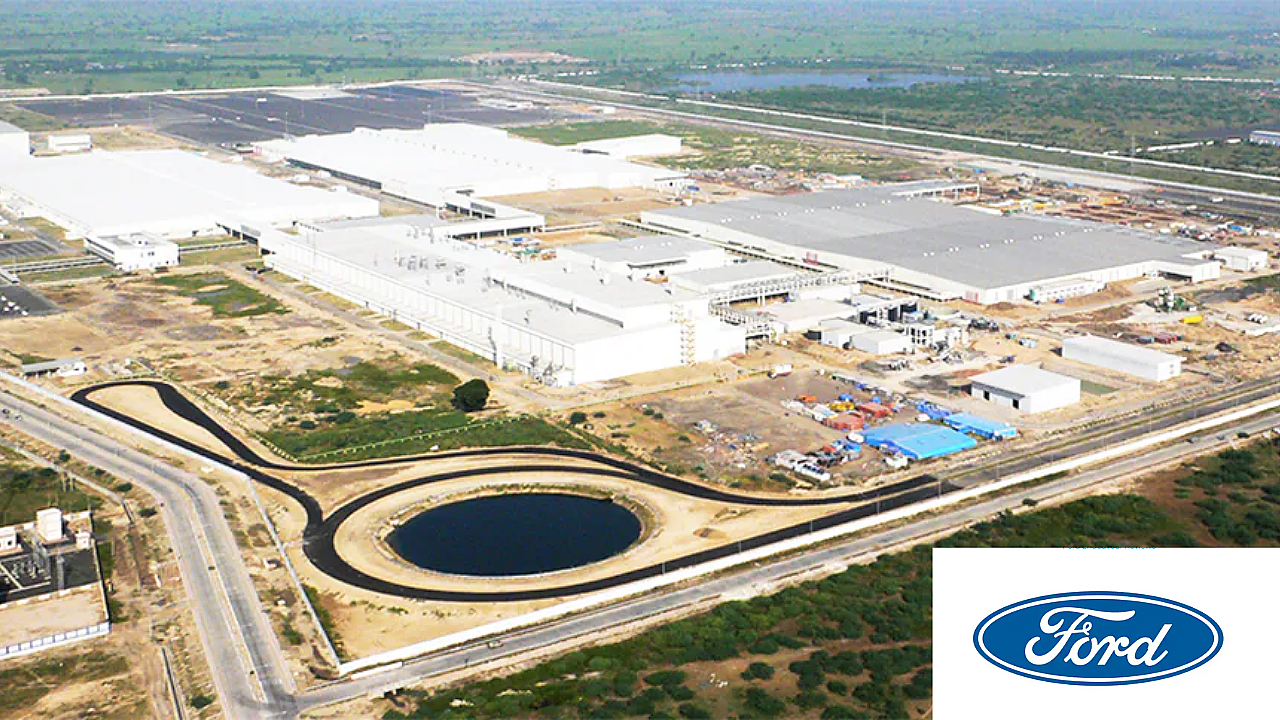
On the eve of Ganesh Chaturthi, a famous Hindu festival considered to be an auspicious day for booking and taking delivery of new vehicles and other household articles, Ford India announced its decision to wind up manufacturing operations of its plants in Sanand, Gujarat, (by Q4 CY21), and in Chennai (by Q2 CY22).
However, the company will retain operations of its engine manufacturing unit in Sanand and also continue its Chennai-based IT division, Ford Business Solutions. Ford will expand it to provide more opportunities for software developers, data scientists, R&D engineers, and finance and accounting professionals, supporting the Ford+ plan to transform and modernise Ford operations globally.
Ripple Effect
This very drastic step has been brewing in Ford’s boardrooms for some time because of the consistent fall in its sales since a few quarters. It did not have products to compete with the Japanese and Korean carmakers nor plans to shore up its ebbing market image. Though the company’s plans to sell off its manufacturing units were being talked about for long, the announcement came as a surprise to the workers, suppliers and dealers.
One of the trade unions in Chennai has petitioned to the Tamil Nadu state government not to entertain any application for the closure of Ford Plant in Chennai because it will have far-reaching ripple effect on the ecosystem created by Ford, involving thousands of people and crore of rupees.
Ford India has announced that about 4,000 direct employees will lose their jobs due to the closure. But the number of indirect employees as contract workers and others will be much more. It is estimated that for every direct worker in the vehicle manufacturing plant there would be at least four (considering automation and robotics at OEMs) at the suppliers' side. Thus, a minimum of 16,000 people will be rendered jobless.
According to supplier sources, Ford India has about 200-plus Tier-I suppliers, supported by several Tier II/III suppliers, primarily from the small and medium enterprises, who have already been affected by severe resource crunch and skyrocketing raw material prices.
According to the Federation of Automobile Dealers Association (FADA), Ford India has 170 dealerships with 391 outlets and the financial loss is estimated to be around INR 2,000 crore. It will also deprive about 40,000 people of their jobs in sales and service.
As an immediate fallout of the closure of Ford India manufacturing plants, about 60,000 people will lose their jobs.
Compensation
Ford is the latest American vehicle manufacturer to have decided to leave India. Earlier, Harley Davidson in 2020 and General Motors in 2017 exited what is considered one of the world’s most promising auto markets. In addition, MAN Trucks and UM Lohia left the country abruptly during the past three years.
Anurag Mehrotra, President and MD, Ford India, said the company is committed to taking care of its customers and working closely with employees, unions, dealers and suppliers to take care of those affected by the restructuring.
However, the dealers, suppliers and customers are concerned about the support that they will get. Customers are apprehensive of adequate service/spare parts support, while the suppliers and dealers worry about non-availability of business.
FADA has been requesting the Government of India to introduce the Franchisee Protection Act to safeguard dealers, when OEMs shut shops. In the absence of such a legislation, auto dealers may not be adequately compensated like their counterparts in many other countries, including Mexico, China, Indonesia and Malaysia.
The Tier-I suppliers have an agreement to compensate them if the volumes committed during the finalisation of price is not maintained. The compensation goes even up to 25% of the original price, and Ford India, according to the sources, has lost a lot of money due to the dwindling volumes.
The American carmaker lost market share as it did not adapt its vehicles to the customers’ needs in India. Many American style features adorned the vehicles. According to FADA, Ford India had only 1.42% market share in August 2021, compared with 1.9% a year ago.
Having its presence since 1995 and invested over $2.5 billion (INR 18,382 crore as per today's exchange value) in India, the carmaker sold only 48,042 units in 2020-21 to garner 1.77% share of the pie.
Piling Losses
Ford India's reason for leaving the country is its accumulated losses of about INR 14,700 crore during the past 10 years and a $ 0.8 billion (INR 5,882 crore) non-operating write-down of assets in 2019.
The reason for the losses is perhaps poor sales and also due to the company's expansion plans – setting up its second facility in Sanand at an investment of $1 billion, which is automated up to 60%, when the capacity at its Chennai plant was not utilised fully even once in its history – doesn’t justify the investments. The investment has created a huge hole not only in its pocket but also in its suppliers as the company insisted on several dedicated suppliers to set up shop in Sanand.
From the OEM’s point of view, Ford did not read the Indian market correctly. During its entry, the small car/ hatchback was in huge demand, but Ford India introduced a sedan. Its product, pricing and positioning were not cut out for the Indian market for the first 10 years. However, the Asian OEMs played their cards well and consistently garnered market share.
According to data available in the public domain, the market share growth was not encouraging as it could notch only 2.8% in FY19 (selling 93,000 units) against 1.1% in FY2000 (about 8,000 units). Its Asian counterparts grew multi-fold during this period. Ford India witnessed a significant drop in volumes to 66,000 units in FY20 and to 48,000 units in FY21.

Pioneering Concept
Ford pioneered the crossover concept (which set the trend for compact SUVs) with the launch of Fusion. Though it was a fantastic vehicle, several inconvenient features, including the left boot release and others, went against it.
The company introduced Ecosport in 2015 and became a trendsetter again. However, it could not sustain, and therefore, its share in the segment fell from 9.5% in FY15 to 3.3% in FY21. On the contrary, the market share of Maruti Suzuki grew from 12.4% to 21.6% and Hyundai from 0.3% to 20.2% in the segment, respectively, during the same period.
Systemic Failures
Ford India has also suffered due to systemic failures in the country. The car manufacturing ecosystem has taken a beating due to fuel price increase, tax structure, and finance cost, which is still attractive only on paper. The tax structure of 46% (GST, cess and others) and the Road tax, which is on the base price plus GST, make the vehicles very expensive in India. Off late, the purchasing power of people in India has taken a beating due to the pandemic, general economic conditions and inconsistent job guarantee.
One of the critical reasons for the multinational companies to invest in India was to leverage the strength of its population and the low base of the number of cars per 1,000 people. It was in single-digit when the economy was opened up and now reached to about 25.
According to the Automotive Mission Plan 2016, unveiled in 2015, passenger vehicles were estimated to increase between 9.4 million and 13.4 million units by 2026, but for the past three years the numbers have remained at around three million units.
With a 1.4 billion population, China sells 29 million cars while India, with a population of 1.3 billion has been selling only about three million cars. The American and European OEMs operating in India were banking heavily on the progression to at least six million units by 2021. However, things became different in the current scenario, affecting the viability of the companies already on a weak wicket.
Supplier-Friendly OEM
Ford India will forever be remembered by the supplier ecosystem in India due to its supplier-friendly attitude. The OEM was focusing on quality and did not resort to cut-throat price negotiations like their Asian counterparts. The company developed many vendors, and even encouraged them to export to its global operations. As a result, many companies became Q1 certified, the prestigious certification allowing the vendors to supply to Ford's plants worldwide.
The OEMs’ focus on quality and supplier encouragement was evident when Ford Motor overrode certain certifications to source alloy wheels for its then-popular Mondeo from a supplier based in Visakhapatnam, primarily due to the robust manufacturing process and product quality.
With the engine manufacturing facility at Sanand being retained, there will still be initiatives on vendor development, and the supplier community will benefit from its quality systems.